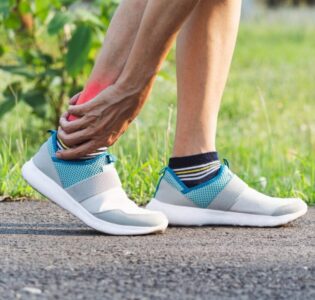 When we catch a cold or develop some soreness in our neck, we typically hope that the issue resolves on its own over the course of the next few days. It would be great if the body could heal all of its issues on its own without proactive intervention, but that’s simply not the case for the vast majority of injuries and illnesses.
When we catch a cold or develop some soreness in our neck, we typically hope that the issue resolves on its own over the course of the next few days. It would be great if the body could heal all of its issues on its own without proactive intervention, but that’s simply not the case for the vast majority of injuries and illnesses.
That said, are there any foot or ankle conditions that will get better on their own without proactive treatment? In today’s blog, we look at a number of common foot and ankle conditions and explore whether or not they’ll heal on their own.
Will My Foot Heal On Its Own?
Let’s take a look at some of the most common foot and ankle injuries and discuss the best way to treat these issues.
Ankle Sprains – An ankle sprain will not heal on its own. Odds are your ankle will start to feel better after a few days, and it may even feel normal once again after a little rest, but you still need to proactively strengthen the supportive ankle ligaments that have been damaged in the sprain. If you don’t strengthen these ligaments, your ankle will not be as stable as it was prior to your injury.
Bunions – That bony prominence at the base of your big toe joint isn’t going to get smaller on its own. In fact, you’re not going to be able to reset the big toe joint to the correct position unless you pursue a surgical procedure. However, for minor or asymptomatic bunions, conservative treatments like changing your footwear, wearing custom orthotics and losing weight can help limit or stop the bunion progression. Don’t just ignore a bunion.
Ingrown Toenail – An ingrown toenail is unlikely to heal completely on its own, but they do tend to respond well to simple at-home treatment. Soaking your feet in warm water, placing a piece of cotton ball under the nail to try and gently maneuver the nail out of the side of your toe and wearing open-toed shoes can sometimes help resolve the issue. If you can’t fix the problem on your own, a doctor can surgically remove a portion of the offending nail so that it grows back correctly.
Hammertoes – Flexible and rigid hammertoes may not always be painful, but that doesn’t mean they’ll just go back to laying flat on their own. Without treatment, the soft tissues that help our toes lay flat will shorten and stiffen, which can make it difficult or painful to wear shoes. Change your footwear and consider custom orthotics if you notice that one or more of your toes is starting to bend upwards or curl under.
Plantar Fasciitis – Rest is a key component to plantar fasciitis management, but rest alone won’t get you where you need to be. Eventually, you need to strengthen your feet with exercise and physical therapy to help get them back to a pre-injury level of fitness and to ensure the plantar fascia can once again handle the stress its being asked to handle. Rest is great in the beginning, but eventually you’ll need to take more proactive action.
Foot Fractures – Finally, there’s not a lot that can be done to speed up the healing process for someone battling a foot or toe fracture. Casting or bracing can help protect the area while the bone heals, but again, it won’t just be the passage of time that will get you back to full strength. The soft tissues in the area will weaken as a result of prolonged protection and limited stress, so you’ll need to gradually take on more physical challenges to restrengthen the atrophied areas.